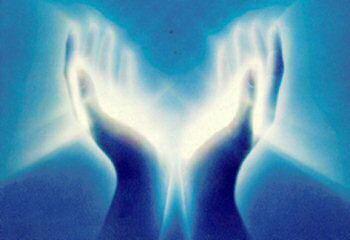Bodywork creates positive structural changes and renews strength
Welcome to our Website!

The Therapeutic Benefits of Orthobionomy
Offered by Sheilah Blaxill, CMT
Orthobionomy, a form of bodywork developed by Dr. Arthur Lincoln Pauls, embodies a holistic approach to healing that prioritizes the body’s innate ability to self-correct and restore balance. This gentle, non-invasive modality integrates principles from osteopathy, neuromuscular therapy, and mindfulness, focusing on the body’s natural alignment and functional patterns. As the field of complementary and alternative medicine continues to grow, orthobionomy presents a unique set of therapeutic benefits that cater to a broad spectrum of physical, emotional, and psychological needs.
This writing explores the key therapeutic benefits of orthobionomy, emphasizing its efficacy in promoting overall well-being.
1. Pain Relief
One of the most prominent therapeutic benefits of orthobionomy is its effectiveness in managing pain. Many individuals seek orthobionomy treatments to address chronic pain conditions such as:
- Musculoskeletal pain: By utilizing gentle techniques to release tension and realign the body, practitioners can help alleviate discomfort related to the back, neck, shoulders, and joints.
- Headaches and migraines: Orthobionomy can reduce the frequency and intensity of headaches by addressing underlying tension and promoting relaxation.
- Postural imbalances: The therapy encourages proper alignment, which can mitigate pain resulting from poor posture and muscular strain.
2. Improved Mobility and Flexibility
Orthobionomy focuses on achieving balance and proper alignment, which can significantly enhance mobility and flexibility. This is particularly beneficial for:
- Individuals recovering from injuries: Gentle techniques can help restore range of motion and facilitate rehabilitation, allowing the body to heal more effectively.
- Older adults: Many older individuals experience stiffness and reduced mobility; orthobionomy can promote gentle stretching and relaxation, making movement easier and more comfortable.
- Athletes: Enhanced flexibility and body awareness can improve athletic performance and reduce the risk of injury.
3. Emotional and Psychological Healing
Orthobionomy does not just address physical ailments; it also fosters emotional and psychological well-being. The mind-body connection is a crucial aspect of this modality, with various benefits including:
- Emotional release: Gentle touch and manipulation can help release stored emotional tension, facilitating healing from past traumas and promoting emotional resilience.
- Stress reduction: Clients often report significant reductions in stress and anxiety levels following sessions. The calming nature of orthobionomy creates a safe space for individuals to relax and recharge.
- Mindfulness and self-awareness: Engaging with one’s body in a conscious way improves self-awareness, enabling individuals to recognize and address their emotional and physical needs more effectively.
4. Promotion of Self-Correction and Body Awareness.
A fundamental principle of orthobionomy is the emphasis on self-correction. This therapeutic approach encourages clients to:
- Listen to their bodies: By facilitating a deeper awareness of their physical sensations, clients can identify areas of tension and imbalance.
- Engage in self-care practices: Orthobionomy empowers individuals to participate actively in their healing process, promoting practices that support ongoing well-being outside of treatment sessions.
5. Safety and Accessibility
Orthobionomy’s gentle, non-invasive nature makes it accessible to a wide range of individuals, including:8
- People with chronic conditions: Individuals with conditions such as fibromyalgia, arthritis, or those who are recovering from surgery may appreciate the gentle approach that orthobionomy offers.
- Pregnant women: The safe, non-invasive techniques can provide relief from discomfort associated with pregnancy, promoting relaxation and well-being.
- Older adults and children: The adaptability of orthobionomy makes it suitable for people of all ages and health conditions, ensuring that treatments are tailored to meet individual needs.
Conclusion
Orthobionomy stands out as a holistic therapeutic modality that emphasizes the body’s ability to heal itself. Its benefits extend beyond mere physical relief, encompassing emotional, psychological, and self-awareness aspects that contribute to overall well-being. By promoting pain relief, improved mobility, emotional healing, self-correction, and accessibility, orthobionomy presents a comprehensive approach to health that is gaining prominence in the realm of alternative medicine. As more individuals turn to integrative therapies, orthobionomy offers a compassionate and effective pathway toward optimal health and vitality.
Sheilah is a professional bodyworker, with years of experience, Reiki Master, Spiritual Guide. Book an appointment now.
